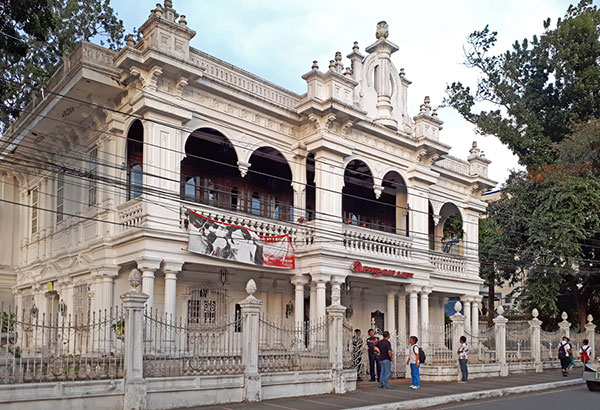The city of seven lakes


The Fule-Malvar Mansion is one of the most beautiful heritage residential structures in the region.
It has been a strange summer in terms of weather. Climate change has screwed up the old and predictable patterns of dry and wet. Despite this, many have ventured south of Manila for short trips to escape the traffic-clogged metropolis.
The good news for those travelling south to destinations in Laguna, Quezon, and Batangas, is that the SLEX and Star Toll roads cut down travel times. Batangas City is reachable in two hours and Lipa City in just over an hour.
I recently found myself in between the two, in Balete town to look at a project site. This hidden gem is lovely and its proximity to Taal Lake makes it a future destination. A handful of celebrities, like Aga Muhlach, have estates nearby. The family of John Prats owns a sprawling resort above the town.
After my visit to the town, it was a quick 15-minute drive to Lipa City and the popular Mt. Malarayat resort, where I had lunch with a friend, architect Toti Turalba. I had been involved as one of the consultants in the original building of the resort developed by Activer Realty (which Toti now heads). It was great to see the place well maintained and the landscape mature.
From Mt. Malarayat, I wanted to visit San Pablo to accept an invitation from another architect, Bimbo Barte. He had asked me to visit the city and look at their heritage sites and structures. Toti suggested a shortcut through a newly opened highway. I reached San Pablo City in only 20 minutes.
I had not been to the City of Seven Lakes since my college days. I spent a weekend a few years back at the quirky bed and breakfast Casa de San Pablo, but did not venture into the city center then.
Architect Bimbo met me close to the lake and proceeded to give me a fascinating tour of the city, accompanied by other members of the local UAP (United Architects of the Philippines) chapter.
We started off with a look at their old municipal hall. I was surprised to find out that it was an art-deco masterpiece by prewar government architect Antonio Toledo, a contemporary of Juan Arellano.
The old municipal hall is in the process of being conserved and houses the city museum. It would be grand if they brought back the old decks that used to overlook the lake. Kudos to the local heritage advocates, and the city, for adaptively reusing this historic structure.
From there we walked over to the neighboring playground, a view deck overlooking the lake and the stairs (hagdang bato) that leads to the Sampaloc lake promenade. The promenade is actually a circumferential road leading to a number of hotels, rest stops and restaurants.
Sampaloc lake is the largest of these seven — all old volcanic craters. The other lakes are Pandin, Bunot, Palapakin, Yambao, Muhicap, and Kalibato. Like Laguna Lake, Sampaloc is filled with fish pens and the lakeside road could be configured better and made pedestrian and tourist-friendly.
From the lake we motored to the center of the city and the Cathedral of San Pablo. The historic church started as a wooden structure built in 1586. Forty years later, a stone edifice replaced it. This was expanded to the present structure a century later with an additional convent and more expansion and improvement towards the end of the Spanish colonial period. The war brought some damage, which was repaired in the decade after liberation. Today the cathedral is undergoing restoration with the help of conservators from the Escuela Taller de Filipinas Foundation.
Like other Philippine towns and cities, the plaza in front of the church is now a large parking lot. Architect Bimbo informed me that there are initiatives to bring the plaza back to its former glory. This project is related to a proposal by the local architects and heritage advocates to also revitalize their Rizal Avenue, which connects the center with the national road a few kilometers away.
I walked down this avenue with my hosts and was struck by how much heritage was still intact from the Spanish, American and postwar eras. I noted the old cinemas done in postwar hybrid deco and international styles of architecture. Then there is the most celebrated residential heritage structure of the city, the Fule-Malvar Mansion.
Dr. Potenciano Malvar built this mansion in 1915. Malvar served as a medical officer in the Filipino-American war then became governor of Laguna until just before WWII. He was chosen mayor of San Pablo when it turned into a city just before the war.
The mansion was the locus of the town’s social and political life. After the war it served the Malvar heirs until it was sold to the National Life company in the ’60s. The mansion changed hands in the 1980s to the Philamlife company, which spent over P40 million to bring it back to its prewar glory.
Along Rizal Avenue are the monuments to Dr. Jose Rizal from the early 1900s and one to Apolinario Mabini, erected a few decades later, as evidenced by its elegant art-deco base.
Unfortunately, I could not stay longer that day. I made a note to myself to visit San Pablo again and stay the weekend by Sampaloc Lake. If summer lasts a little longer, that is.
* * *
Feedback is welcome. Please email the writer at paulo.alcazaren@gmail.com.



















